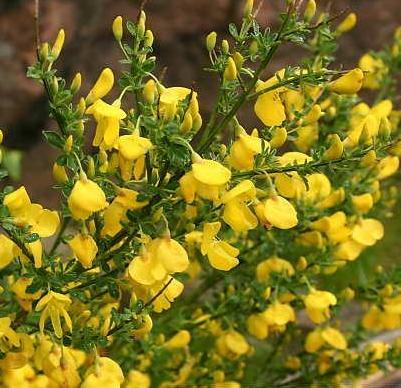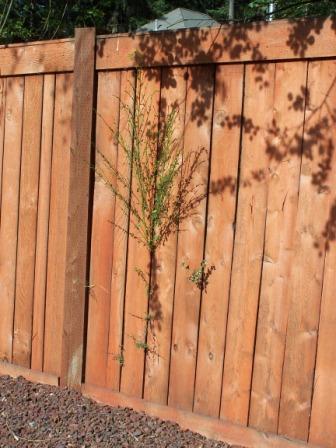Since we’re back on the alien train (spaceship?), I thought I’d bring up another of my least favorite shrubs – Scots broom – as our next installation of WOW (why oh why?).
Scots (or scotch) broom (Cytisus scoparius) is a much-reviled intruder in the western and eastern United States. Originally introduced as a sturdy ornamental, this legume quickly invaded disturbed areas and is labeled as a noxious weed in several western states. In Washington, it’s quarantined. Research dollars have been dedicated to studying best methods of eradication. So it doesn’t take a rocket scientist (or even a garden professor) to figure out that it’s probably not a wise addition to one’s landscape.

But apparently some nurseries either (1) haven’t paid attention or (2) don’t care. In a quick look at the internet, I found nurseries in many states, including Oregon and California, that sell this species. Many will argue that they are selling “less invasive” or “sterile” cultivars, which is a poor excuse in my opinion. Readers of this blog know by now that cultivars often revert to wild type, and there’s no reason to assume that broom cultivars are exempt from this ability. Furthermore, we know that plants have the ability to extend their ranges past what we think they are (hello kudzu?).

Just popping in to say hello
There are many ornamental alternatives to Scots broom that can easily be found online or in print. I’d love to hear some rational arguments from nursery owners, landscape designers, or anyone else justifying the sale of this plant.
If I had $1 for every Cytisus I’ve pull out of the ground in supposedly ‘indigenous vegetation’ areas, I’d be a very wealthy man. Still nurseries sell it. I wish it were banned here.
Oh, how I admire Scots Broom. So green, so pretty. Every time I see it at the nursery I have to remind myself there is a thug under that beautiful form. I’d much rather the nursery didn’t tempt me with it.
Scared me for a sec! At a glance, the up-close photo of the flowers looks like evening primrose.
Speaking of invasives and evening primrose, what about Oenothera speciosa? It has got to be one of the most seductive and invasive natives in the nursery. So hard to turn your head from such a wolf in sheep’s clothing. But certainly another WOW.
I had to laugh one day (to keep from crying) when I saw some oblivious but well-meaning tourists having a hay day photographing all the “wildflowers” in the Columbia Gorge. In the peak of it’s bloom, Scot’s broom blankets the hillsides, fields, and roadsides here with it’s awful yellow presence. After pulling so many of these vicious plants, I simply cannot look at them and think of them as pretty. Jimbo, I’m with you – early retirem
ent if I had $1 for each one. While in nurseries, I’ve had to restrain myself lest I go on a rampage either lecturing the oblivious employee or gleefully running around, yanking them all out of pots!
If they thought they could sell them, they would put dandelions in pots on the annual table.
VG, I’ll bet they COULD sell dandelions simply by marketing them as “healthy organic greens for your kitchen.”
Nancy, you might want to read the previous post here. There’s no such thing as an “invasive native” – just rowdy natives! Evening primrose are fabulous for attracting hummingbirds, goldfinches, and other wildlife, by the way.
Well, other than being pretty in bloom, broom does has one other redeeming feature; gorse is worse.
I wish it were banned. I wish the tree of heaven or Ailanthus tree were banned too.